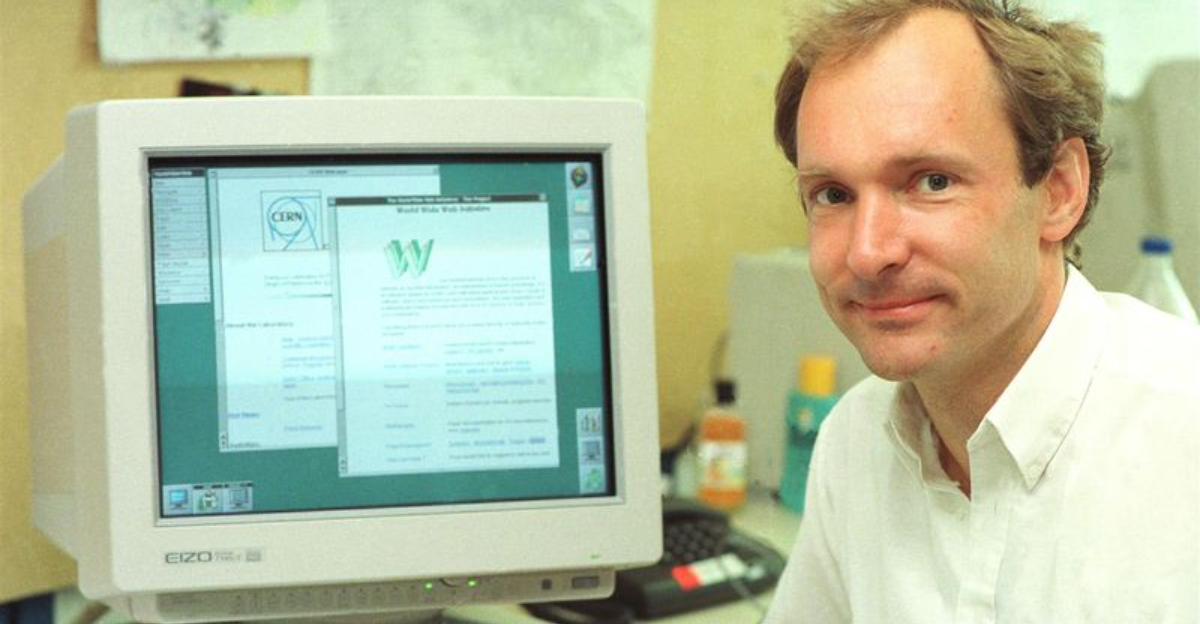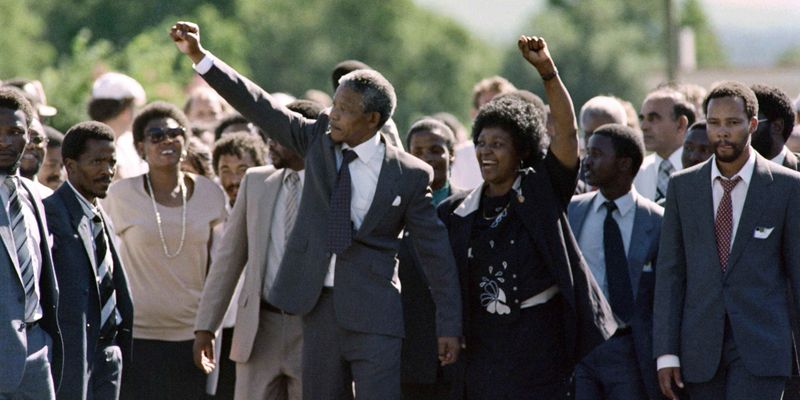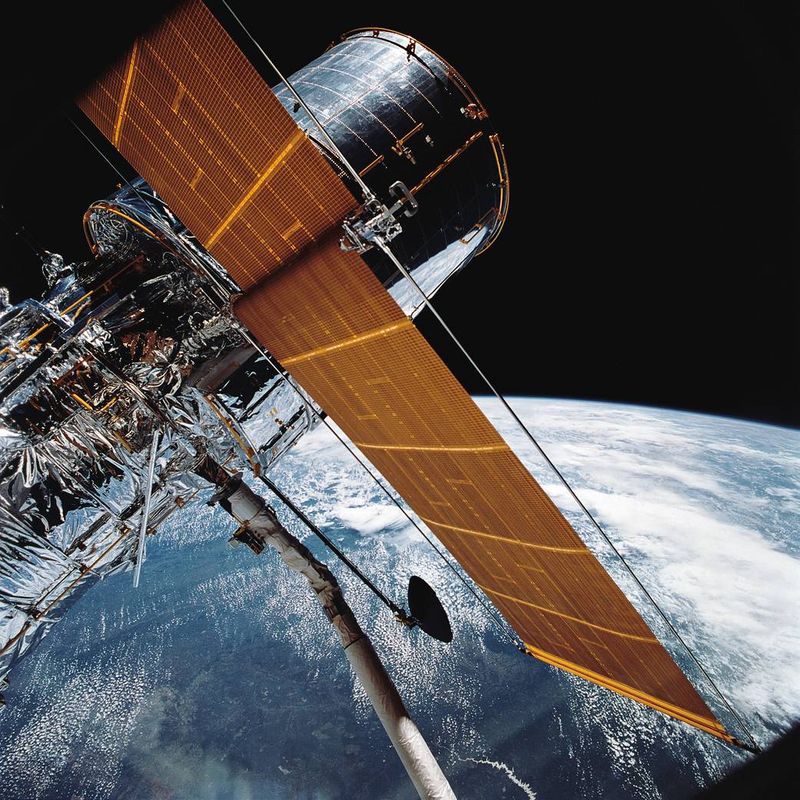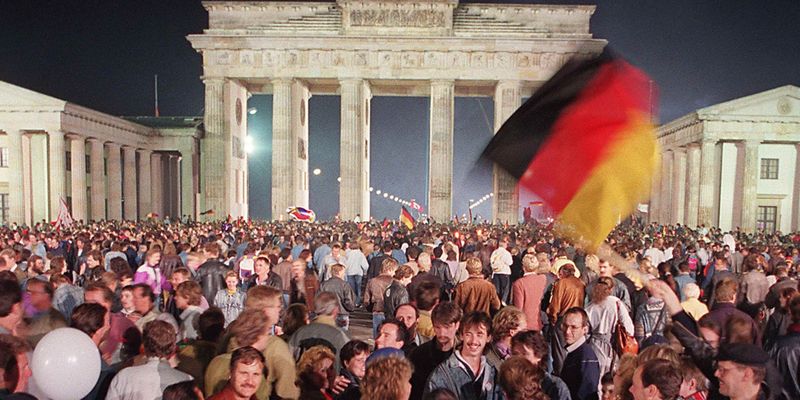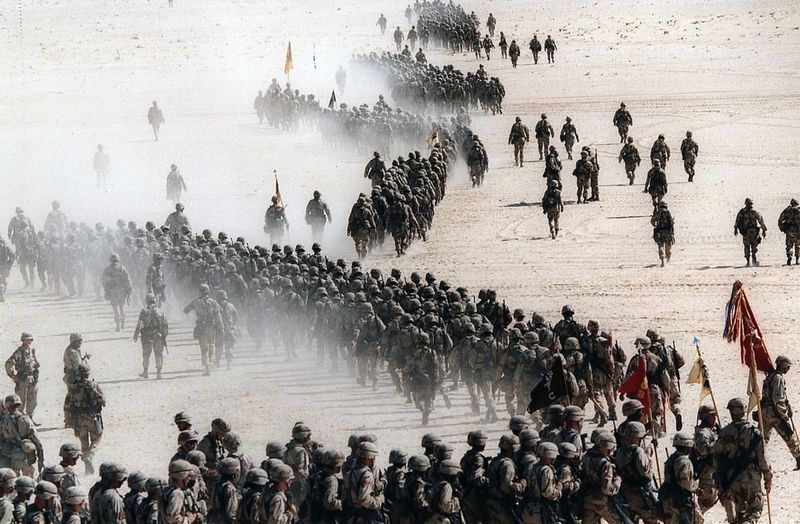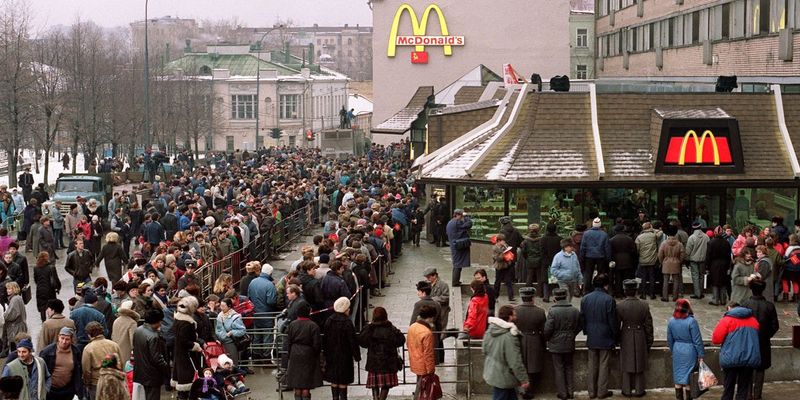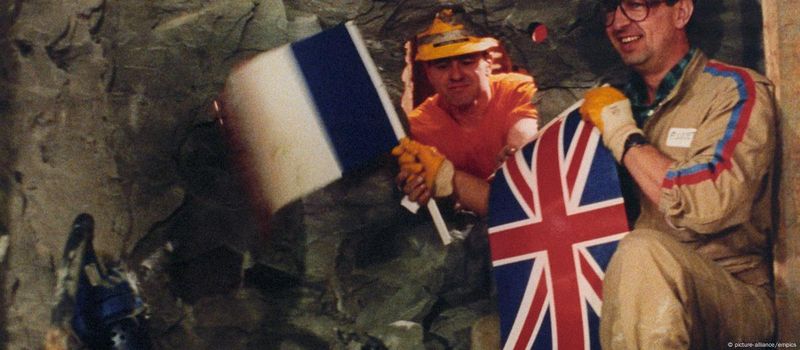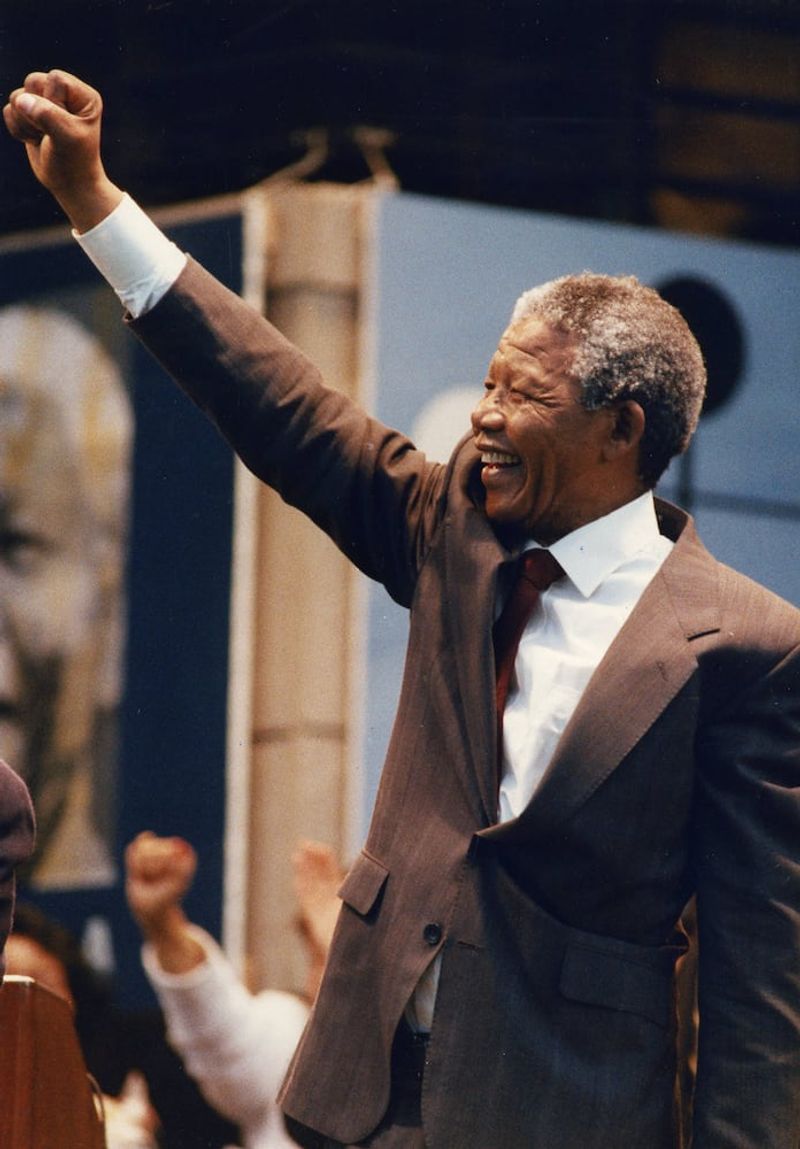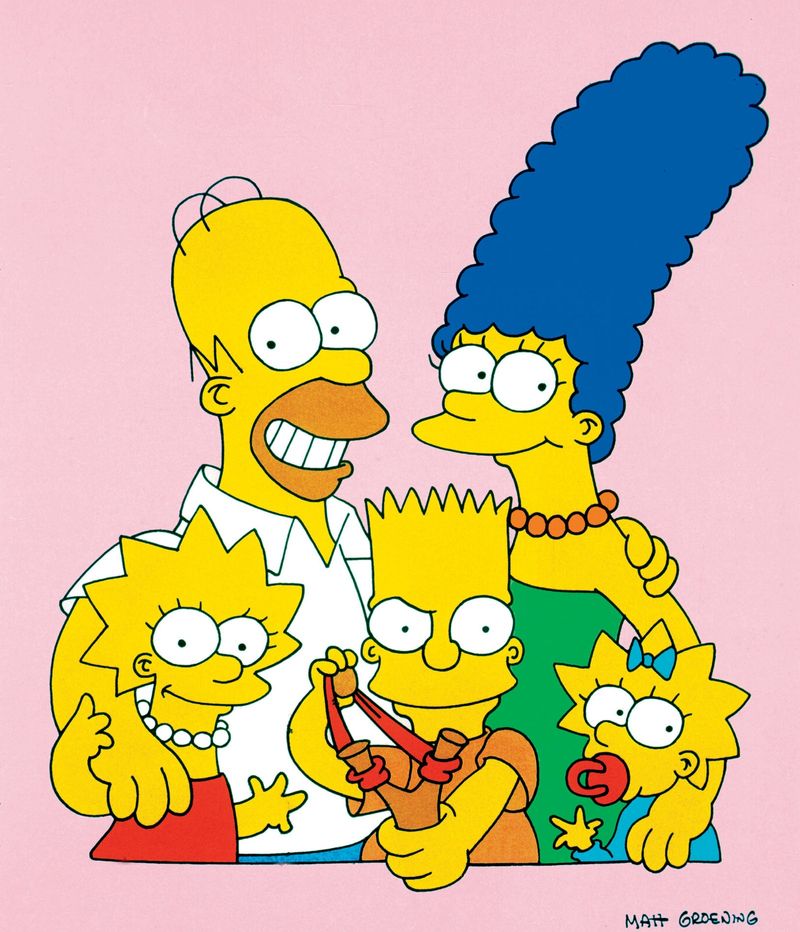Remember 1990? It was a year of momentous change that shaped our modern world. The Cold War was ending, technology was advancing, and culture was shifting in exciting new directions. Whether you lived through it or are just curious about this pivotal time in history, these fifteen significant events from 1990 paint a picture of a world in transformation.
1. Nelson Mandela Freed After 27 Years
February 11, 1990 marked a turning point in South African history. Nelson Mandela walked out of Victor Verster Prison a free man, raising his fist in triumph as crowds cheered wildly.
For nearly three decades, Mandela had been imprisoned for fighting against apartheid, South Africa’s brutal system of racial segregation. His release signaled the beginning of apartheid’s end.
Within four years, South Africa would hold its first democratic elections, and Mandela would become president. His journey from prisoner to president inspired freedom movements worldwide and demonstrated the power of resilience in the face of injustice.
2. Hubble Space Telescope Takes Flight
Named after astronomer Edwin Hubble, NASA’s revolutionary space telescope rocketed into orbit aboard the Space Shuttle Discovery on April 25th. Scientists celebrated this engineering marvel that promised to transform our understanding of the cosmos.
Though initially plagued by a flawed mirror that blurred its vision, a dramatic 1993 repair mission would correct the problem. The telescope began capturing breathtaking images of distant galaxies, nebulae, and cosmic phenomena never before seen.
Over three decades later, Hubble continues its mission, having helped determine the universe’s age and expansion rate while inspiring generations with its awe-inspiring glimpses into deep space.
3. Germany Reunites After Decades of Division
Celebrations erupted across Germany on October 3rd when East and West officially became one nation again. The Brandenburg Gate in Berlin, once a symbol of division, transformed into a gathering place for joyous citizens from both sides.
This historic reunification came less than a year after the Berlin Wall fell in November 1989. For 45 years, families had been separated by Cold War politics and a heavily fortified border.
The merger wasn’t just symbolic—it required massive economic integration and cultural healing. While challenges remained, Germany’s reunification represented the Cold War’s end and a new chapter for Europe, setting the stage for greater European unity in the decades ahead.
4. Art Thieves Pull Off Historic Heist
Boston’s Isabella Stewart Gardner Museum became the scene of the largest art theft in American history during the early morning hours of March 18th. Two men disguised as police officers talked their way inside, then bound security guards and methodically selected their targets.
Thirteen masterpieces vanished that night, including works by Rembrandt, Vermeer, Degas, and Manet. The total value? Over $500 million.
Empty frames still hang in the museum today—a haunting reminder of the missing art. Despite a $10 million reward and decades of investigation, the case remains unsolved, with none of the stolen treasures recovered, creating one of art history’s greatest unsolved mysteries.
5. Operation Desert Shield Begins
When Iraqi forces invaded Kuwait on August 2nd, the world reacted swiftly. Five days later, President George H.W. Bush launched Operation Desert Shield, deploying American troops to Saudi Arabia to prevent further Iraqi aggression.
Military personnel and equipment poured into the Persian Gulf region as the U.S. built an international coalition of 35 countries. The massive deployment represented America’s largest military buildup since Vietnam.
This operation set the stage for Operation Desert Storm in January 1991—the Gulf War that would liberate Kuwait. Desert Shield marked a significant post-Cold War moment when the U.S. demonstrated its willingness to project military power globally to protect allies and strategic interests.
6. McDonald’s Opens in Moscow
January 31st witnessed a cultural earthquake in Moscow as the golden arches of McDonald’s rose above Pushkin Square. Thousands of curious Soviets waited hours in the freezing cold to taste their first Big Mac.
More than just fast food, this restaurant symbolized the Soviet Union’s increasing openness to Western culture and capitalism. The Moscow McDonald’s was the largest in the world at the time, with 700 seats and 27 cash registers to handle the crowds.
Workers received intensive training in American-style customer service—smiling included! For many Soviets, this McDonald’s represented their first taste of Western consumerism, arriving just before the Soviet Union itself would collapse the following year.
7. World Wide Web Proposal Revolutionizes Information
At CERN laboratory in Switzerland, British computer scientist Tim Berners-Lee and Belgian engineer Robert Cailliau unveiled a proposal that would transform human communication forever. Their November 12th document outlined a revolutionary system for sharing information across computer networks.
Berners-Lee had already developed the building blocks: HTML (the formatting language), HTTP (the transfer protocol), and the first web browser. This formal proposal accelerated development of what we now call the World Wide Web.
Unlike earlier internet systems that required technical expertise, the Web made online information accessible to everyone through simple hyperlinks. Few realized it then, but this innovation would reshape education, commerce, entertainment, and virtually every aspect of modern life.
8. Buster Douglas Shocks the Boxing World
Sports fans worldwide gasped in disbelief on February 11th when the unthinkable happened in Tokyo, Japan. James “Buster” Douglas, a 42-to-1 underdog, knocked out the seemingly invincible Mike Tyson in the 10th round.
Tyson entered the ring undefeated with a fearsome 37-0 record, having demolished opponents with terrifying efficiency. Douglas, motivated by his mother’s recent death, fought with unexpected determination despite being knocked down in the eighth round.
The upset ranks among sports’ greatest David-versus-Goliath moments. Though Douglas would lose the heavyweight title to Evander Holyfield in his next fight, his victory over Tyson remains a powerful reminder that on any given day, the impossible can happen.
9. Exxon Valdez Captain Faces Justice
Captain Joseph Hazelwood stood in an Anchorage courtroom on March 22nd as the verdict was read. Found guilty of negligent discharge of oil, he escaped more serious charges related to the catastrophic 1989 Exxon Valdez oil spill.
The previous year, his supertanker had run aground in Alaska’s Prince William Sound, spilling 11 million gallons of crude oil. The environmental disaster killed countless birds, sea otters, and other wildlife while contaminating over 1,300 miles of pristine coastline.
Hazelwood’s punishment—a $50,000 fine and 1,000 hours of community service—struck many as insufficient given the scale of destruction. The case highlighted growing concerns about environmental protection and corporate responsibility that would influence policy for decades.
10. Channel Tunnel Workers Meet Beneath the Sea
History happened 40 meters beneath the seabed of the English Channel on December 1st. British tunnel worker Graham Fagg and his French counterpart, Philippe Cozette, broke through the final section of rock separating their respective tunnels and shook hands.
This momentous connection marked the first physical link between Britain and continental Europe since the Ice Age. The engineering marvel required three tunnels—two for rail traffic and a smaller service tunnel—bored simultaneously from both shores.
Construction faced enormous challenges, from water pressure to maintaining precise alignment across 31 miles. When completed in 1994, the “Chunnel” would revolutionize travel between Britain and France, allowing passengers to journey between London and Paris in just over three hours.
11. Twin Peaks Redefines Television
“Who killed Laura Palmer?” became the question on everyone’s lips after April 8th, when director David Lynch’s surreal murder mystery debuted on ABC. Set in a fictional Washington logging town, Twin Peaks blended soap opera with supernatural horror, creating something television had never seen before.
Kyle MacLachlan starred as FBI Agent Dale Cooper, whose investigation of a homecoming queen’s murder uncovered the town’s dark secrets. The show’s dream sequences, cryptic symbolism, and eccentric characters captivated viewers and critics alike.
Though it lasted just two seasons, Twin Peaks profoundly influenced television storytelling. Its legacy lives on in later ambitious series like The Sopranos, Breaking Bad, and Stranger Things, which similarly blend genres and embrace unconventional narrative techniques.
12. Mandela’s Triumphant American Tour
Just four months after his release from prison, Nelson Mandela arrived in the United States on June 20th for a whirlwind 11-day, eight-city tour. Crowds numbering in the hundreds of thousands welcomed him with thunderous applause in New York, Boston, Washington D.C., Atlanta, and beyond.
Mandela addressed Congress, met with President Bush, and spoke at massive rallies where he thanked Americans for their anti-apartheid activism. In Harlem, over 200,000 people gathered to hear him speak, while Boston’s Esplanade saw 250,000 supporters.
The tour wasn’t just ceremonial—it was strategic. Mandela sought to maintain international pressure on South Africa’s government and secure financial support for the African National Congress as negotiations for democracy continued back home.
13. First Female Surgeon General Takes Office
Dr. Antonia Novello shattered a significant glass ceiling on March 9th when she was sworn in as the United States Surgeon General. Not only was she the first woman to hold this prestigious position, but also the first Hispanic.
Born in Puerto Rico, Novello overcame childhood health problems to become a pediatric nephrologist before entering public service. As Surgeon General, she focused on women’s health, minority health issues, and led campaigns against underage drinking and smoking.
Her appointment represented a milestone for women in medicine and government leadership. Novello’s pioneering role helped pave the way for future diverse appointments, including Dr. Joycelyn Elders and Dr. David Satcher, reflecting America’s gradual progress toward more representative leadership.
14. Wall Street Giant Drexel Burnham Lambert Collapses
The financial world trembled on February 13th when investment banking powerhouse Drexel Burnham Lambert filed for bankruptcy. Once a Wall Street titan with 5,000 employees and $3 billion in assets, the firm imploded under the weight of legal troubles and crippling debt.
Drexel’s downfall followed the 1989 conviction of its junk bond king, Michael Milken, on securities fraud charges. Throughout the 1980s, Milken had revolutionized corporate finance by promoting high-yield bonds that funded countless corporate takeovers.
The collapse symbolized the end of the decade’s financial excesses portrayed in movies like “Wall Street.” It also triggered significant regulatory reforms and marked a turning point in American financial history, closing the chapter on the freewheeling “greed is good” era.
15. The Simpsons Transforms Television Animation
After debuting as a Christmas special in 1989, Matt Groening’s yellow-skinned family launched their first full season in 1990 and quickly became a cultural phenomenon. The animated sitcom followed the misadventures of Homer, Marge, Bart, Lisa, and Maggie in the fictional town of Springfield.
Bart Simpson’s rebellious catchphrases like “Don’t have a cow, man!” swept the nation. Schools banned Bart Simpson t-shirts as the spiky-haired troublemaker became the show’s breakout character.
Beyond its humor, The Simpsons offered sharp social commentary and pop culture references that appealed to both children and adults. The show’s success opened doors for sophisticated animated programming aimed at grown-ups, influencing everything from South Park to Family Guy.
